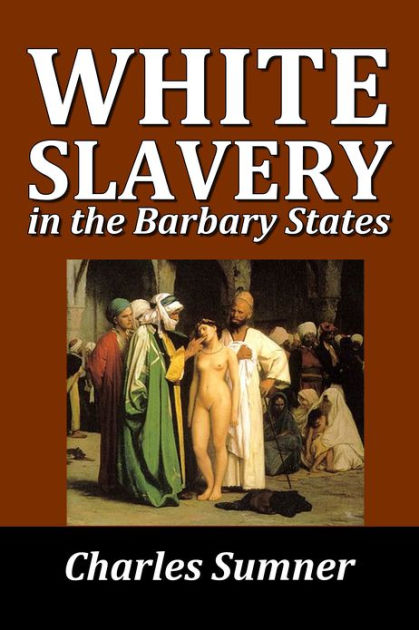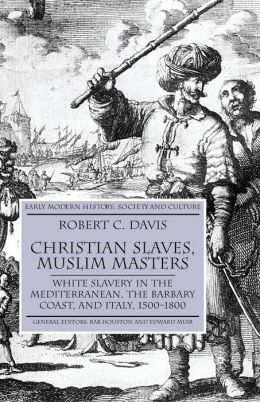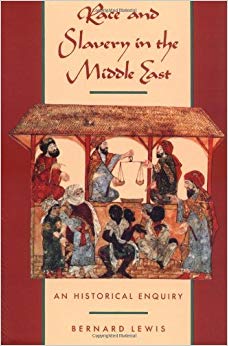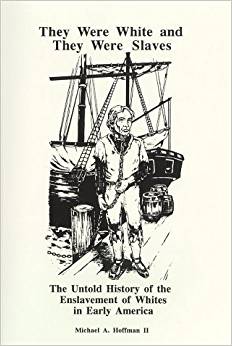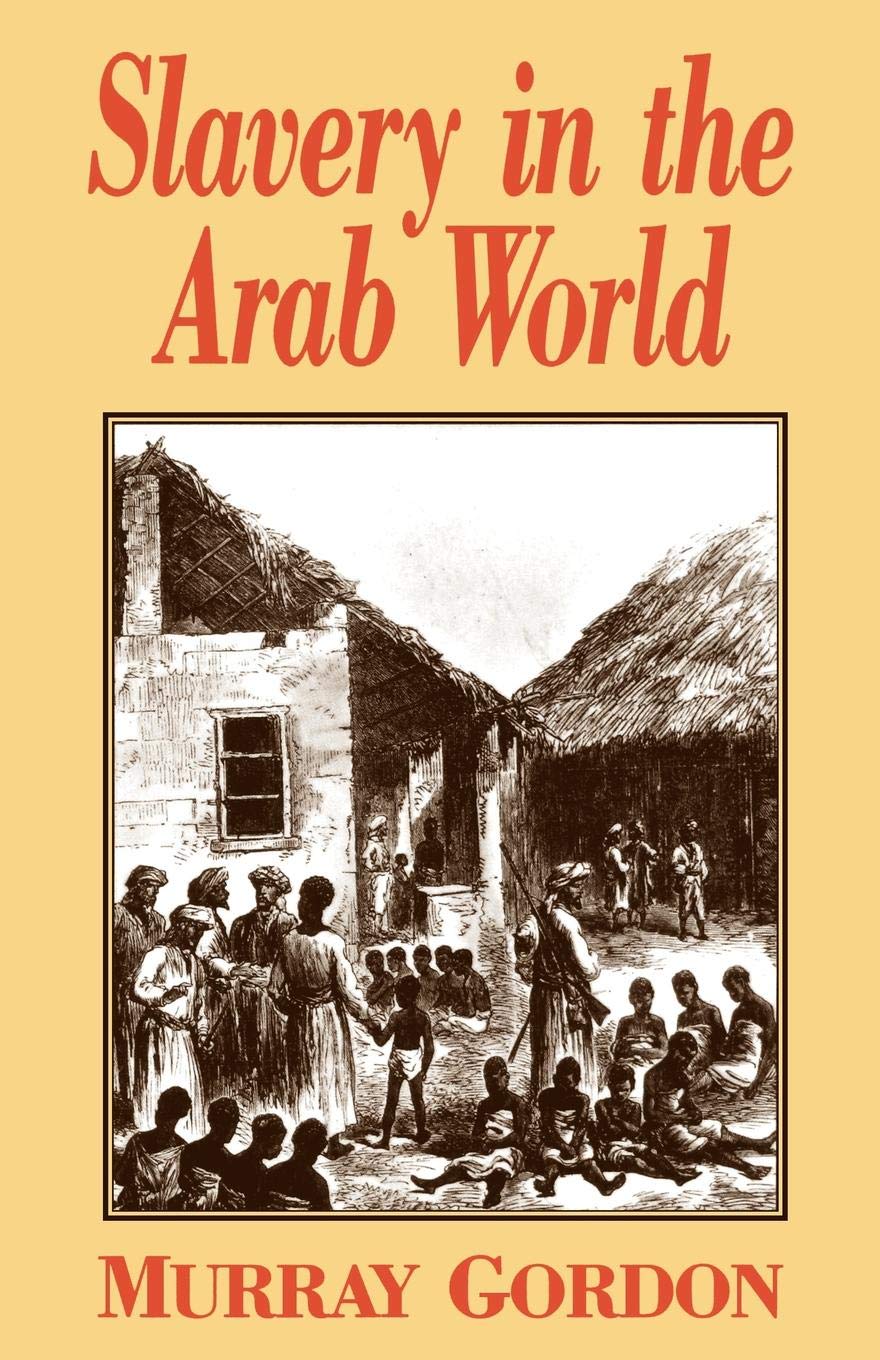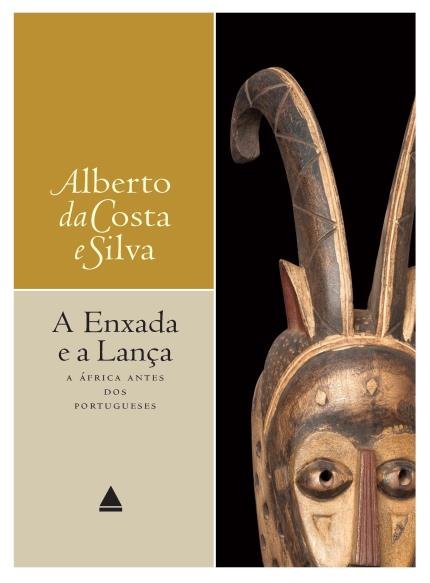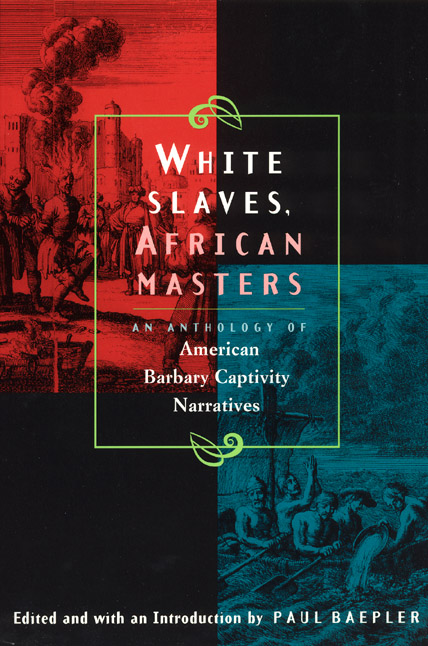- A África às avessas (http://www.olavodecarvalho.org/semana/090914dc.html)
- Muslim Genocide on Black Africans Through Mass-Castration - Tidiane N´Diaye (https://youtu.be/jEL2NPwWCks)
-
-
"This article introduces narratives by American captives during and after the Barbary Wars (1801-1805, 1815). Set against a background of American imperial pursuits, the accounts reveal the hypocrisy and double-standards common among early Americans (who accepted black slavery in America but reacted strongly against the idea of white slaves in the custody of the North African Muslims). The accounts were largely works of fiction, but were accepted as fact. Arabs are presented as bizarre, gruesome, and primitive. The stories were sold by the thousands, so members of almost every household were exposed to these negative portrayals.
The ANNALS of the American Academy of Political and Social Science, Vol 588, Issue 1, 2003"
White Slaves, African Masters (https://doi.org/10.1177/0002716203588001007) -
"In 1904, Teddy Roosevelt sent seven U.S. warships to Tangier to demand the release of the millionaire Ion Perdicaris, who had been captured and held for ransom by Raisuli, a sworn enemy of the Moroccan sultan. Rumors of invasion filtered into the national headlines and, at the Republican National Convention that summer, Roosevelt's secretary of state, John Hay, called for Raisuli's death. What later became known as the Perdicaris Affair stirred public outrage and rekindled memories of the nation's first postrevolutionary war when, in 1801, Thomas Jefferson sent the U.S. Navy to combat Barbary privateers. At that time, Barbary abduction was almost commonplace, and the genre of the Barbary captivity narrative flourished. While held hostage, Perdicaris wrote his own Barbary captivity narrative, which circulated widely, first in Leslie's Magazine and later in the National Geographic Magazine. The crisis, however, was soon forgotten after Roosevelt's successful reelection. The public might have altogether forgotten about Perdicaris but for John Milius's 1975 film, The Wind and The Lion. Milius, who both wrote and directed the film, based his account on Perdicaris's 1904 captivity episode and, in many ways, he preserved the popular image of the savage North African, even calling Perdicaris's captor the “Last of the Barbary Pirates.
Prospects: An Annual of American Cultural Studies, Volume 24, October 1999 , pp. 177-211"
Rewriting the Barbary Captivity Narrative: The Perdicaris Affair and the Last Barbary Pirate (https://doi.org/10.1017/S0361233300000338) -
"Paul Baepler has provided a valuable service to students of American intellectual history by collecting memoirs of Americans held captive in North Africa, published mainly between 1798 and 1820. They extend in time from Cotton Mather's 1703 sermon urging prayer for the captives' redemption to Ion Perdicari's 1904 memoir of being held hostage for ransom by Moroccan tribal politics. They range in veracity from the fictitious (the memoirs of Maria Martin and Eliza Bradley) to the detailed and credible: James Cathcart, for example, spent eleven years as a slave in Algiers, earning enough money to purchase the ship on which he sailed home to the U.S., and Robert Adams, a black American, was sent by his new owners to Timbuktu to buy more Negro slaves. Almost all the authors appeal to their audience's sense of gruesome adventure-we were served rat in prison, wrote Cathcart-and to their Christian piety. Many captives converted to Islam, it seems, but the nine authors here exulted in keeping the faith.
African Studies Review, Volume 42, Issue 3, December 1999 , pp. 174-177"
Review of White Slaves, African Masters: An Anthology of American Barbary Captivity Narratives. (https://doi.org/10.2307/525263) - A photograph of a drinking fountain above which hangs a 'whites only' sign is one of the enduring images of racial antagonism in the twen tieth century. A similar image occurs in the 1655 narrative of Abraham Browne, a slave. The foreman overseeing Browne refuses to drink out of the same water pot?a water pot that Browne was forced to carry by yoke from a well. The twist, as you might have surmised, was that Browne is white, a captive in Morocco, and his boss a 'negro.' 'I was dispissed of ye most dispisedst people in the world,' Browne wrote. He clearly knew of the horrors he might be forced to face. His own father, years earlier, had also been a captive in Algiers. ##NEWP## The most popular Barbary captivity narrative in the United States was James Riley's best-selling account of his capture by North African 'wandering Arabs.' It came out in at least 28 editions, spawning a sequel and an illustrated children's edition, and is still in print today. Selling nearly a million copies, the book detailed the extraordinary story of a group of white slaves in Africa. Even young Abraham Lincoln owned a copy of Riley's Authentic Narrative, and it has been credited as one of the influences that shaped the future president's opinion of slavery in the United States. But by the time Riley's account first appeared in 1817, the story of Barbary captivity was already almost two centuries old in North America and even older in Europe.##NEWP## Early American Literature, Vol. 39, No. 2 (2004), pp. 217-246 (https://www.jstor.org/stable/25057349)
-
"Firsthand accounts of American captives held in North Africa go back to the mid–seventeenth century, with Abraham Browne’s description of his brief enslavement in Morocco in 1655 and Joshua Gee’s Narrative, a record of his involuntary servitude in Algiers from 1680–87. (Although these two Bostonians’ narratives were not published until the twentieth century, one can presume that their oral histories were well known along the New England coast.) It was not until 1785, however, that the dilemma took on national significance, as the new republic first confronted the challenge posed by the Barbary states’ ongoing capture of unprotected American citizens. How would a nation with little diplomatic experience, no navy, and few trading options resolve a threat so perilous to its new identity and its role in the world? What role would American captives play in defining that story and drawing attention not only to their personal plight but also to the country’s vulnerability in the Mediterranean? Centering on a close examination of captives’ letters, Lawrence Peskin’s Captives and Countrymen brings us toward a nuanced answer to these questions.
The New England Quarterly, Volume 82, Issue 4, December 2009, p.740-743"
Captives and Countrymen: Barbary Slavery and the American Public, 1785–1816. (https://doi.org/10.1162/tneq.2009.82.4.740) -
"It is not well known that between 500,000 and 1,000,000 white men and women were held as slaves in North Africa from roughly 1500 to 1830. Most were taken at sea, in raids on coastal towns, or captured on shore after shipwrecks. A handful of English merchant seamen who ventured into the Mediterranean in the sixteenth century became victims. At least one pamphlet resulted, the first known Barbary captivity narrative by an Englishman, which Richard Hakluyt included in his Principle Navigations. Barbary captivity was a topic of considerable interest in America from early settlement into the antebellum era. Merchants and seamen during the 1600s feared Moroccan corsairs who raided communities as far north as Iceland, and took vessels in north Atlantic waters. Eighteenth-century British shipping was less vulnerable to attack. Monetary tribute and the Royal Navy kept the peace between Britain and most of the Barbary powers most of the time. Although fewer British seamen suffered captivity in North African bagnios, the shipping news in colonial newspapers reported that vessels of weaker nations were still being taken at sea by 'Algerines.' Hundreds and possibly thousands of Christians still labored for Islam as slaves.
Journal of the Early Republic, Vol. 20, No. 2 (Summer, 2000), pp. 318-320"
Reviewed Work: White Slaves, African Masters: An Anthology of American Barbary Captivity Narratives (https://doi.org/10.2307/3124711) -
" The Barbary captivity tale, with stock images of Christian men forced to row Algerian galleys and Christian women forced into the Pacha's harem, formed a popular staple in European culture, from Cervantes's II Cautivo" in Don Quixote to Mozart's "Abduction from the Seraglio." In this collection, Paul Baepler has selected nine representative excerpts from the American versions of the genre. Baepler's collection begins with Cotton Mather's 1703 sermon, 'The Glory of Goodness,' recounting the redemption of Bostonian Joshua Gee from Moroccan captivity. It ends with Ion Perdicaris's account of his kidnaping in Morocco two centuries later and his release on the demand of President Theodore Roosevelt.
The William and Mary Quarterly, Vol. 57, No. 2 (Apr., 2000), pp. 459-461""
Reviewed Work: White Slaves, African Masters: An Anthology of American Barbary Captivity Narratives by Paul Baepler (https://doi.org/10.2307/2674496) - Islam's Dark History of Slavery (Whitewashed and Forgotten) (https://www.youtube.com/watch?v=XIjPPRf0YZk)
